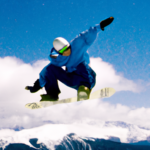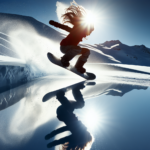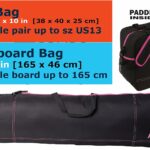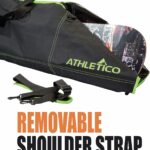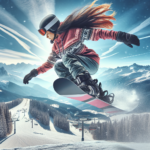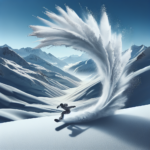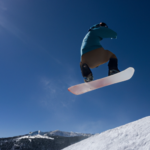Dragging your board through fresh powder can be quite the thrill, but mastering the art of hitting snowboard rails takes that adrenaline rush to a whole new level. In this engrossing piece, “How To Hit Snowboard Rails?” escalate your snowboarding skills to new heights as you discover the ins and outs of this fundamental trick. Charting a course from basic approach techniques to nailing the perfect landing, you’ll be hitting those rails with aplomb in no time. So, are you ready to push your riding to the limit? Let’s get started.
Understanding Snowboard Rails
Snowboarding rails, simply referred to as ‘rails’ in the snowboarding world, are a key component in freestyle snowboarding. They require a whole different set of skills and can add a great deal of fun and flair to your traditional snowboarding experience.
Definition of Snowboard Rails
In the context of snowboarding, rails are not the thin metal sticks you occasionally fix your gaze upon during train rides. Snowboard rails are steel structures emulating those found in urban settings, like handrails on staircases. In a snowboarding park, these rails are set up in a way that allows you to slide across in myriad ways using your snowboard.
The Purpose of Snowboard Rails
Snowboard rails serve a distinct purpose in freestyle snowboarding. They allow for the execution of tricks that involve sliding with the base of the board along the rail, known as a rail slide or grind. This adds a whole different level of skill and thrill to snowboarding, breaking away from the traditional downhill glide.
Types of Snowboard Rails
There are various types of snowboard rails that vary in shape, size, and level of difficulty. Flat bars are common and great for beginners, while handrails, kink rails, or rainbow rails offer more challenging and thrilling experiences.
Getting Started with Snowboarding
Before you even think about rails, you need a solid foundation in snowboarding. Let us walk you through some essentials.
Choosing the Right Snowboard
Choosing the right snowboard is a key first step. Your snowboard’s design, length, and width are all factors to consider and often depend on your height, weight, and level of experience or skill.
Wearing the Correct Safety Equipment
Nothing else matters if you aren’t wearing appropriate safety equipment. A sturdy helmet, snowboarding boots, wrist guards, a back protector, and impact shorts can minimize risks of injury.
Learning Basic Snowboarding Moves
Before you hit the rails, make sure you’re comfortable with some basic moves. These involve mastering balance, learning how to turn and stop, and maneuvering over different types of terrains.
Understanding Snowboarding Rules and Etiquette
Every sport has rules and snowboarding is no exception. Understanding right-of-way rules, respecting signage, keeping a safe distance from others, and avoiding reckless behavior are all about keeping both you and those around you safe.
Initial Training on Flatland
Flatland training is your stepping stone to gaining the confidence and skills you need for the more complex techniques associated with rails.
Basic Flatland Boarding Techniques
Get your basics clear – learn how to strap yourself into your board, stand, slide, and even how to fall to avoid injuries. Understand how to control the board and how your movements and weight shifting will influence the board.
Practicing Balance and Control
Balance and control – you’ll need both for a successful rail slide. Practice moving from edge to edge on your board while maintaining your center of gravity.
Trying Out Rail-Like Obstacles in A Controlled Environment
Practice makes perfect – start with rail-like obstacles. This will give you a feel for what actual rail sliding will be like without the potential risks.
Introduction to Rail Techniques
It’s time to push your boundaries and enter the exciting world of rail sliding.
Studying Successful Rail Techniques
Improve through observation. Seeing others successfully sliding rails, whether in person or via video, can provide valuable insights and illustrate the proper techniques in action.
Understanding the ‘Approach, Takeoff, Maneuver, and Landing’ Technique
Approaching at the correct angle, taking off smoothly, maneuvering across the rail with the right body movements, and landing safely are all part of this technique. Master each to execute the perfect rail slide.
Learning About ‘Jibbing’
‘Jibbing’ is a term used in snowboarding for manipulating your board over and around obstacles like rails, boxes, and even tree logs. It helps refine balance, board control, and creative thinking.
Approaching the Rail
Now, let’s focus on nailing that rail approach.
How to Position Yourself for A Rail Slide
The approach begins with aligning yourself with the rail and getting into a sliding position. Your focus, body alignment, and board positioning are essential at this point.
Adjusting Speed and Stance before The Rail
Move into a centered stance and adjust your speed. Approach the rail with controlled momentum – not too slow, not too fast. Remember, your stance and speed will greatly influence your takeoff, slide, and landing.
Visualizing and Preparing for The Maneuver
Before you execute the rail slide, visualize the whole process. Think through your approach, takeoff, slide, and landing. Prepare your mind for what is to come.
Executing the Rail Slide
Up next: turning visualizations into reality.
Correct Body Positioning during The Slide
Ensure your weight is centered over the board while your knees and torso flex to absorb shock and maintain balance. Look towards the end of the rail to maintain a steady line.
Maintaining Balance and Control During the Rail Slide
Maintaining balance and control while sliding down the rail is vital. Your board should ideally be flat against the rail, with your weight mainly on your leading foot for better control.
Useful Tips for A Smooth Slide
Remember to keep your body’s center of gravity low. Absorb movements with your knees and hips rather than your waist or upper body. And, above all, relax – tight, rigid movements won’t do you any favors.
Landing from A Rail Slide
Stick the landing, and you’ve just completed your stint on the rail.
The Correct Landing Posture
When landing, flex your knees to absorb the impact. Your stance should be centered and your board flat to keep you steady and upright.
How to Recover from A Slide
Sliding off at the end of the rail is a big no-no. Aim to smoothly transition from the rail back to the snow, maintaining your stance, and moving into a smooth glide or preparing for your next trick.
Practicing Safe Landings
Practicing safe landings is crucial to avoid injury or damage to your board. Remember, the smoother you are in your recovery, the more successful your rail slide.
Common Rail Slide Mistakes
We all make mistakes, but it’s important to know what they are so you can avoid them in the future.
Committing to the Rail Slide too Early or too Late
This can offset your balance and make the trick more difficult than it needs to be. Timing is key to a successful rail slide.
Incorrect Foot and Body Positioning
Good posture is everything in snowboarding. Incorrect positioning can lead to falls or injury. Always ensure you’re centered over your board, knees slightly flexed, with your body facing the rail.
Losing Control or Balance During the Slide
Often caused by a poor approach or incorrect positioning, losing control or balance during the slide can be a fast track to a wipeout. Always aim for a steady, controlled slide.
Improving Your Rail Sliding Skills
Perseverance is key! Keep these tips in mind to continue advancing your rail sliding abilities.
Regular Practice
The more you practice rail sliding, the more comfortable and skilled you’ll become. Even when you’re not at the snowpark, visualize your slides to maintain a sharp mental representation of the skill.
Mastering More Complex Rail Slide Techniques
There are several types of rail slides to master such as the 50-50, boardslide, and lipslide. Once you are comfortable with simple slides, challenge yourself with complex techniques.
Videotaping and Reviewing Your Maneuvers
Recording and reviewing your efforts can help you spot weaknesses, correct mistakes, and monitor your progress. Be your own toughest critic!
Snowboarding Rail Etiquette
Last but not least, let’s discuss some crucial etiquette you should follow on the snowboarding rails to maintain a friendly and safe environment for everyone.
Respecting Other Snowboarders
Respect others on the mountain. Appreciate their different skill levels and learning curves. Avoid getting in their way or rushing them.
Taking Turns at Rails
Snowboarding is not about hogging rails. Remember, everyone is there to enjoy and learn, so take turns and respect the riding space of others.
Safe and Appropriate Use of Snowboarding Parks and Rails
Follow the rules at your local snowpark. Rail sliding is fun, but should always be done safely, following the set guidelines to avoid accidents. Moreover, only perform tricks and maneuvers that you’re comfortable with, and always consider your safety and those around you.
That wraps up our thorough guide on how to hit rails in snowboarding. Remember that practice, patience, and perseverance are key to improving – take your time, keep practicing, and always prioritize safety. Good luck!
- What Snowboard Bindings Should I Get? - January 23, 2024
- What Size Screws For Snowboard Bindings? - January 23, 2024
- How To Snowmobile On Water? - January 23, 2024

